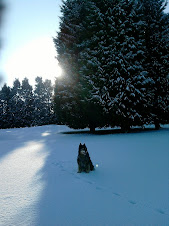Oftentimes when I discover a new place I can feel how old it is, especially now that I am in England. I can almost smell the ancient age of trees and soil in the air. And sometimes, a place has such familiarity that I actually wonder if I have been there before. Take Chalkney Wood for example. In the heart of Colne Valley in Essex County lies Chalkney Wood, an ancient forest that has lived for nearly 10,000 years. Yet, however ancient this forestland is, it can be said that it does not give the same feel as other places I have been. The wood is skillfully managed by the Essex County Council and the Forestry Commission. Coppicing has been practiced in this wood for over 400 years so if they don’t have that method down yet, they probably never will. Suffice it to say though they have it down. And this past weekend I observed first hand the practice of coppicing and reaped the benefits of this method of woodland management. [Photo]
Chalkney Wood The drive to the wood was quick and easy. As my husband, stepson and I drove up the dirt road to Chalkney Wood, I felt a thrill I haven’t in a long time. With the pinging sound of gravel kicking up on the underneath of the car it reminded me of home, driving on the back roads of Vermont. How apropos that the address to the wood is America Road. There were multiple choices of paths from which to choose to enter the wood. On our chosen trail we quickly found ourselves meandering through a recently cut portion that had begun to re-grow giving that fresh and alive feeling of youth. As we worked our way through, admiring the many wildflowers in the early stages of bloom, we enjoyed the sun on our face and the piercing blue sky. Conversation sprouted on how this part of the wood had been cut very recently and that certain trees were proudly sporting their bright orange patch to show how they had been chosen to remain standing while others had obviously met their match with a chainsaw. A clear sign that the survivors were the chosen natives to remain, almost as if to watch over life. [Photo]
Wool Street No sooner had we finished that conversation did we notice that the wood had changed dramatically. Larger trees, plenty of undergrowth, woodland flowers and moss-covered stumps were enveloping us until our sunny path turned into a wonderful true woodland walk. The trees were older and we felt their age. The path seemed endless too. Weaving our way throughout the woods, often changing course, we found ourselves resting at handmade benches, on stumps or even in trees. My breathing was steady save for the several deep breaths made to inhale the smell of decomposing leaves and trees: a real woodland smell triggering another recognition I couldn’t quite put my finger on. Was it home? I do miss New England and I almost found it here in Chalkney Wood. It was at this moment I noticed we were walking along the ancient Roman street, Wool Street. Haha! This is definitely not New England. This is true England in all it's ancient life and history. And we were here, walking the same path, breathing the same air and living in a moment that so many of our forefathers had done. [Photo]
Muntjac (center of path in distance)
All in all it was a marvelous day, complete with a picnic lunch, a few tree climbs, wildlife and laughter. The promises of viewing wildlife as long as we remained fairly quiet became a reality when we spotted one hungry muntjac – my stepson’s first glimpse of a muntjac too. I encourage you to visit Chalkney Wood. If it’s in your back garden, you have nothing to lose. If it’s the better part of a day for you to get there, bring your picnic lunch and binoculars. You won’t be disappointed. Take the Chalkney Wood Walk This marvelous 5-mile walk takes you through the Colne Valley and Chalkney Wood into Earles Colne. Enjoy lunch at one of the several pubs or a cream tea at the tea room in Earles Colne. Visit the Colne Valley site for details of the walk.
Nearby Villages of interest include Marks Tey, Bures, Sudbury and Colchester.
09 April 2010
Subscribe to:
Post Comments (Atom)






No comments:
Post a Comment